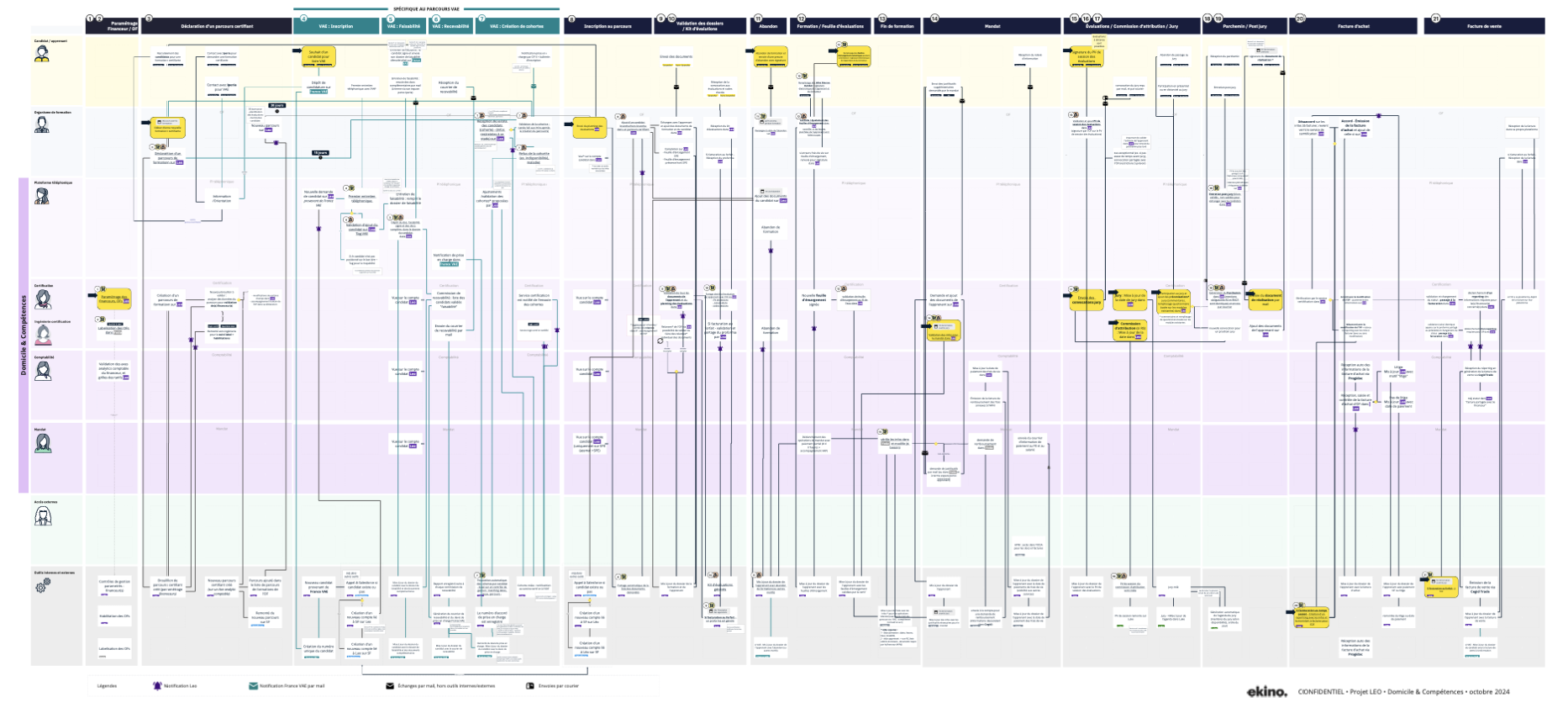Project scoping and alignment
to improve the management of certified trainings
Contract : 6 months (06/2024 - 12/2024)
Role : Service Designer
Provided expertises : Collaborative workshops・Project scoping through user-centered approach・Process mapping・Role and responsibility definitions
Tools : Miro
Industry : Education/Training
BACKGROUND
The client was a training organization for the sector of individual employers and home employment (childcare, home care, certification for individual employers). They support people who wish to have their skills validated and obtain a state diploma. Their actions contribute to inclusion initiatives, particularly for people who are far from employment.
CHALLENGES
They wanted to improve the management and monitoring of certified training programs by addressing several key issues related to collaboration and process management:
Limited visibility between internal departments contributing to the same process.
Fluctuating requirements of external players to comply with regulatory standards, the requirements of France Compétences and funders.
Quality of certification by ensuring fair and rigorous evaluations.
OUTCOME
A more flexible and scalable project management process, capable of adapting to the changing requirements of external actors. Process helped technical teams to propose different scenarios to improve the digital ecosystem of the client.
Through as-is process mapping and collaborative workshops, client’s services have now better visibility into their process and the activities of other departments.
MY CONTRIBUTION
As the Service & UX Designer, I worked alongside a lead designer, a project manager, and a developer/information architect. Initially tasked with designing a new tool, our research quickly revealed that the core challenge lay in optimizing the process itself, rather than simply introducing a new digital solution.
Key responsibilities
I conducted interviews and observations with stakeholders to map the existing process, identifying key pain points and uncovering design opportunities. Next, I worked on defining the target vision, mapping out cross-departmental interactions, roles and responsibilities, bottlenecks, decision points, and validation processes. This step provided stakeholders with a clearer view of interdependencies and areas for improvement. Finally, I translated this vision into detailed user flows (UX), projecting how the new tool would integrate into the process. This approach helped stakeholders visualize the tool’s concrete impact.
Navigating process complexity
Given the complexity of the target process, a key challenge was making the map more collaborative and visually digestible. To achieve this, I explored and iterated on different ways to represent workflows, ensuring clarity and engagement. I combined service blueprint with slide-based representations and an interactive Miro board, making it easier for stakeholders to grasp the details of the mapping.
MAPPING COMPLEXITY
Given the complexity of the target process, a key challenge was making the map collaborative and visually digestible. I explored different workflow representations, combining a service blueprint, slide-based visuals, and an interactive Miro board to ensure clarity and engagement for stakeholders.
PROJECT KEY MOMENTS
Stakeholder interviews & observations・Experience map・Service blueprinting・Alignment workshops・Role & responsibility definition・User flows
This content is confidential and shared for recruitment purposes only. Please do not share without permission. I’d be happy to share more details upon request while respecting confidentiality—just reach out!


